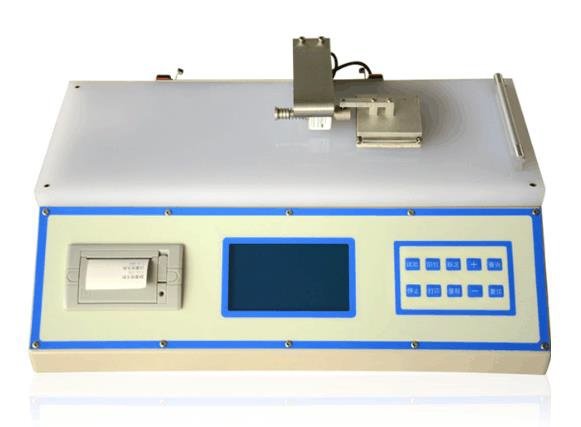As you would have guessed from the name, a friction tester or the coefficient of friction tester tests the friction. In technical terms, the coefficient of friction tester is the relationship between the force of friction and normal friction between two surfaces. There are two types of coefficient of friction tester: kinetic and static. These are used for testing the friction of sheets, paper, plastic film, wood, coating, braking pass, and so much more. You can easily guess that friction is important to keep the object in a balanced position, and this tester is used to measure the value of the same.
Understanding The Different Types Of Coefficient Of Friction Tester:
Static coefficient of friction tester– It is the force required to move one surface over another. It keeps the object in a stationary position. It is responsible for keeping the object in the stationary position on a smoother surface.
Kinetic coefficient of friction tester– It is the ratio when one surface is in motion. Kinetic friction follows static friction. And it is this force that is responsible for holding back the regular motion.
Deformation coefficient– It is the force that stops the movement of the sliding or rolling objects.
Molecular coefficient- It is the force that limits the movement of the object on a smooth surface or when fluid is involved.
You might be wondering what makes COF so important; well, the fact of the matter is that this COF plays an important role in ensuring the proper balance of the object. The packaging companies, by keeping a tab on the COF, the companies that are into manufacturing plastic bags, mulches, mowers, mailers, can optimize their performance and prevent problems related to storage.
Factors that impact the result of coefficient of friction tester :
When you are doing the COF measure, there is a greater possibility of getting affected. Here are some of the key factors that you must know:
There is a possibility that the rubber surface of the old and new sled is different. So make sure that they are the same before you begin the testing. This will prevent variation.
You must keep a check on the roughness or the plate surface of the tester. This must be the same. Remember, when you are using the coefficient of friction tester to test the texture of thin films, then the surface texture of the plate may get transferred to the result.
Make sure that you calibrate the tester to 0 before starting to use it.
Don’t miss checking the surface of the rubber pad before you begin testing. If you find the rubber pads are worn out, then it’s advisable that you opt for the pad’s replacement.
While calibrating the instrument, make sure that you don’t re-zero it after the sled is connected to the load cell.
You must check the speed of the motor. As per the ASTM D 1894, the testing speed should be at 150mm/minute.
When you are using the coefficient of friction tester, you must remove the wrinkles on the film.
If you compare the result from different labs, you must ensure that both the testing labs are using the same instrument. Variation in the instrument will also impact the final result.
The temperature and humidity condition also impacts the final result. You must check the lab conditions before beginning the test.
These are some of the basic tips that must follow when using the coefficient of friction tester. Well, there are different testers and brands of the same. But again, you must focus on choosing the best one that can give you accurate results.











